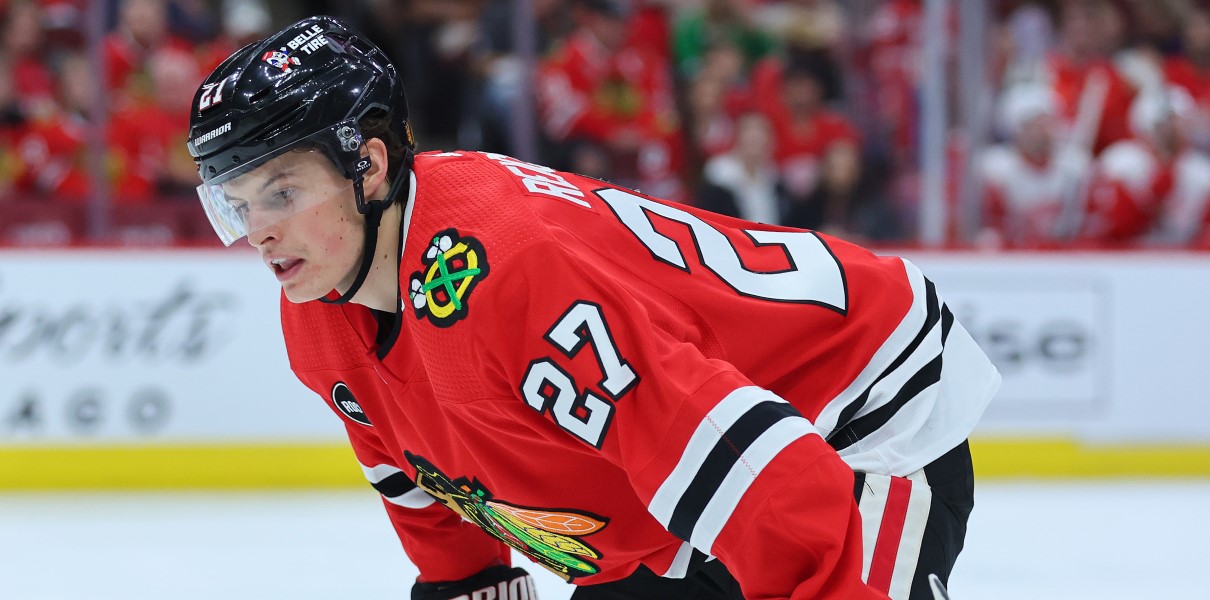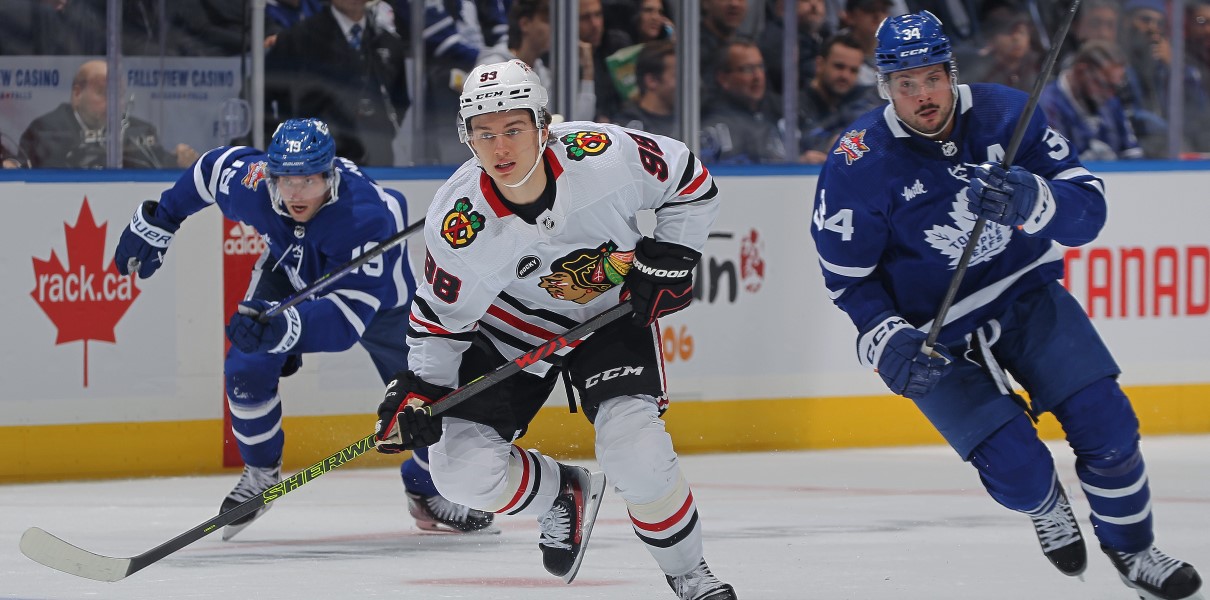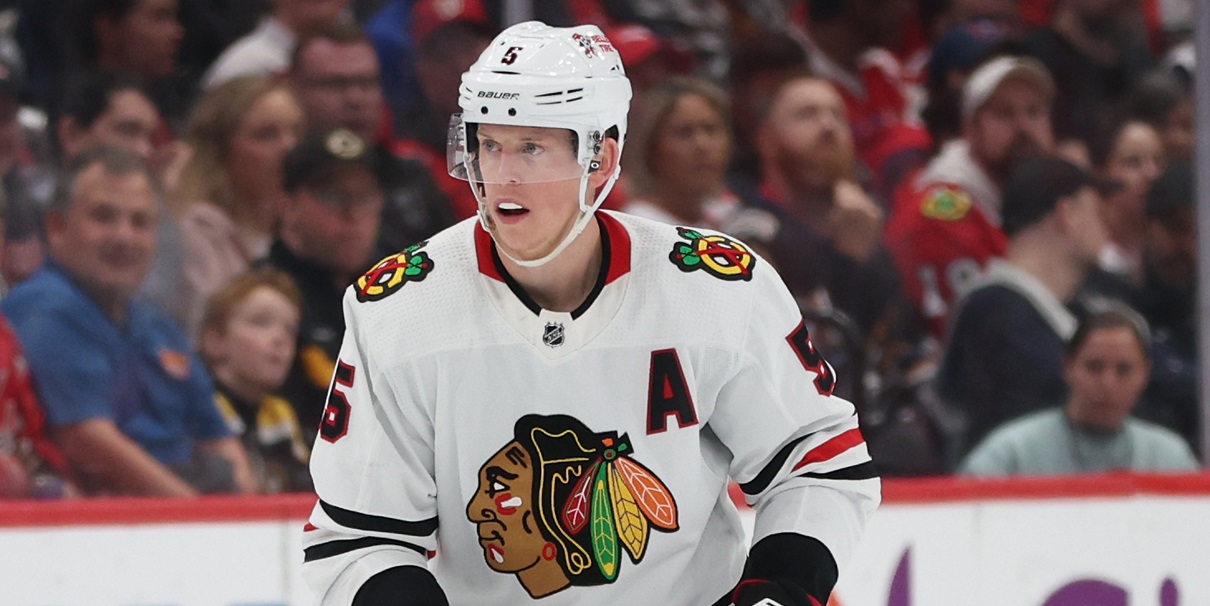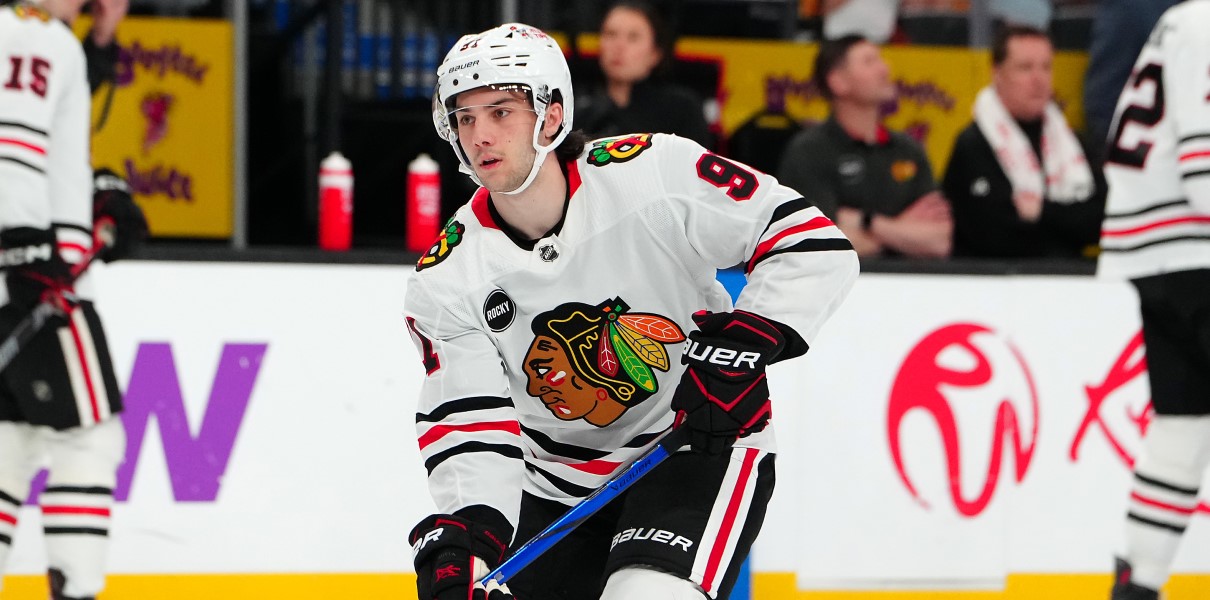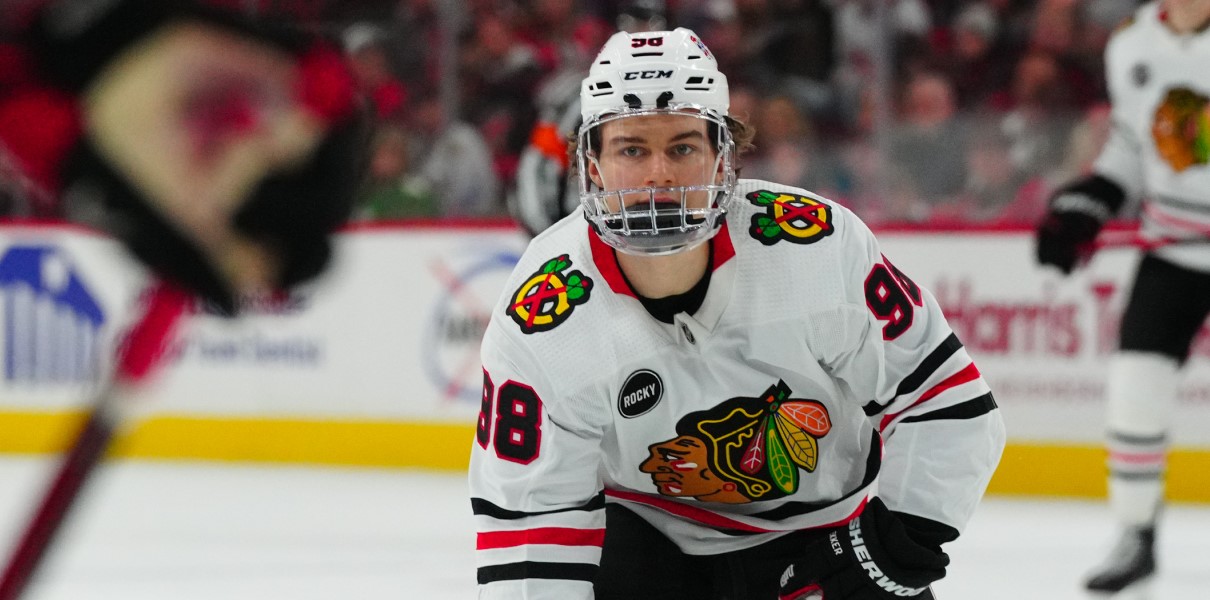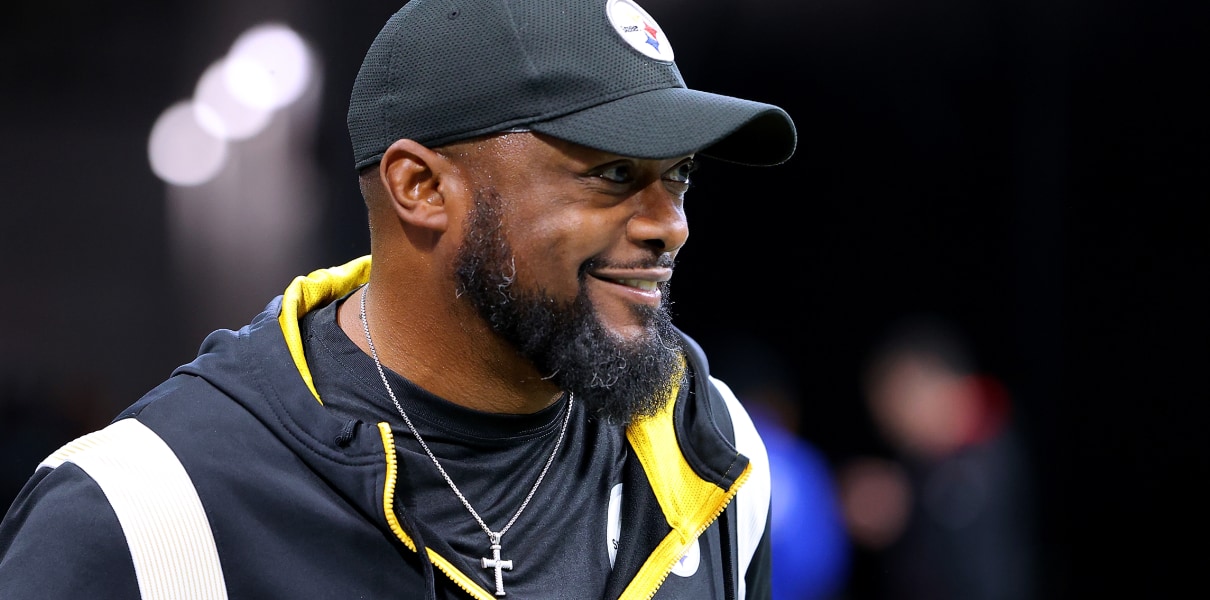We’re now one full week removed from the excitement of the Blackhawks winning the draft lottery and the right to select Connor Bedard first overall. We’ve also learned the Blackhawks own the 19th overall selection in the first round, thanks to the Brandon Hagel trade and the Panthers making it to the third round of the playoffs.
And we’ve heard Blackhawks general manager Kyle Davidson mention he might be open to moving up in the 2023 NHL Draft if the right situation presents itself.
There are a number of ways that moving up might present itself to Davidson as we get closer to the 2023 NHL Draft at the end of June. But we know it will come at a cost of some sort: sending out an NHL player or a prospect (or multiple), bringing back a contract, additional draft capital or… a mixture of the three?
This week we’re going to spend a little time digging into what it might look like for the Blackhawks to move up in the first round of the draft. First, we’ll consider the cost to trade up. Then we’ll look at some potential trade partners. And, finally, we’ll consider the prospects the Blackhawks might be targeting if they can make a trade work to climb the draft board.
Let’s begin by looking at the cost to move up.
Blackhawks Trade-Up Cost(s)
Looking back through the past four drafts, we’ve seen multiple trades take place involving top-15 picks in each draft. It doesn’t take much imagination to remember the aggressive nature of the Blackhawks’ moves last year; Chicago was able to add two picks in the top 15 in trades that sent Alex DeBrincat and Kirby Dach out of town. With respect to the Hagel trade, those moves were the first significant moves to start the rebuild; the first round picks acquired in the Hagel deal are in 2023 and 2024.
What we find is many of the trades involving top-15 overall picks involved a star-caliber player changing homes, and the picks that landed early in the draft were futures. That’s true of the picks the Blackhawks traded to Columbus for Seth Jones (2021 No. 9 and 2022 No. 6), San Jose sent to Ottawa for Erik Karlsson (2020 No. 3), and a pick that wound up in Colorado in the Matt Duchene trade (2019 No. 4). All three of those massive trades involved multiple pieces and a future first-round pick that wound up being near the top of the draft.
Because of the moves last year, the Blackhawks don’t have a star-caliber player to move that would accomplish that feat; with his cap hit and the state of the league’s cap ceiling, moving Seth doesn’t appear likely (his no-move clause also doesn’t help, even if they wanted to move him). Chicago might be in the mix to benefit from a similar transaction with some of their future first-round picks down the road, but not right now. So let’s check that off the board.
Picks for Picks
NHL draft picks are weight differently than NFL draft picks, so the formula to move up and down is different than many of the situations that were discussed ahead of the Bears traded down from the No 1 spot in this year’s draft. As a reminder: the NFL doesn’t have a minor league system, and the number of positions to consider are so different that there are more factors to consider when moving up/down in an NFL draft than the NHL.
There are a few examples of deals since the 2019 draft that were straight picks-for-picks transactions. With the Blackhawks owning four selections in the second round and two more in the third, this feels like a possible scenario for Davidson to investigate, so let’s consider what those deals were as benchmarks for the cost to jump a few spot.
Arizona drafted defenseman Victor Soderstrom at No. 11. Philadelphia drafted defenseman Cam York and No. 14 and packaged No. 45 with a third-round pick to move up in the second-round.
This feels a little closer to the Blackhawks looking to move up from 19 to a top-15 spot. And, considering the Blackhawks’ stockpile of draft assets, it feels achievable with what they have available. The Red Wings drafted goaltender Sebastian Cossa at 14. Dallas did well; they selected forward Wyatt Johnson at 22. The Stars also drafted Artem Grushnikov in the second round and Jack Bar in the fifth.
The common theme between these two trades is a pick in the middle of the second round was the starting point to move up into the top-15 overall selections. The bigger the climb, the more significant the secondary asset needs to be, but using the Detroit-Dallas deal as a benchmark certainly doesn’t leave us fearing too steep a price to move up a few spots.
Dead Money Included
The third way some of these deals take place is a willingness for one team to bring back a contract in the process. In doing a team a financial favor, the cost can be draft assets. Since taking over as general manager, Davidson has shown a willingness to do this.
Last year, we saw the Blackhawks move up 13 spots from No. 38 to No. 25 in a deal that got goaltender Petr Mrazek off the Leafs’ books. We’ve also seen Davidson acquire a second-round pick in 2024 to take Jason Dickinson‘s contract off the Canucks’ hands; he traded away surplus defenseman Riley Stillman to make that deal.
And one of the second-round picks that might be in play for a move up was acquired from Ottawa with a fourth-round pick in 2026 to get Nikita Zaitsev’s contract off the Senators’ books.
We’ve seen a few instances in recent years of a lottery pick being included in a salary dump move.
With roughly $40 million in cap space and a relatively weak free agent class, adding the right veterans to the Blackhawks’ roster while also making a move-up maneuver might be in the cards. Davidson has shown a willingness and ability to make these moves happen.





